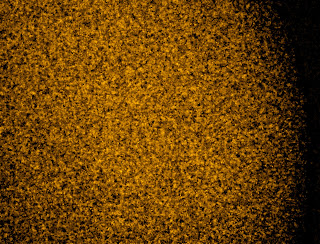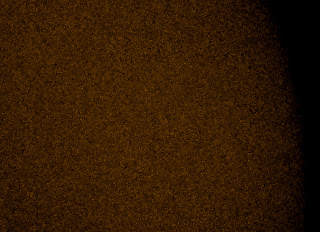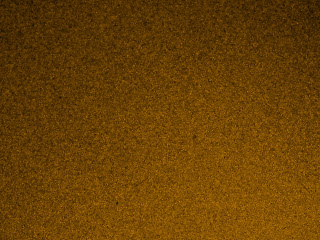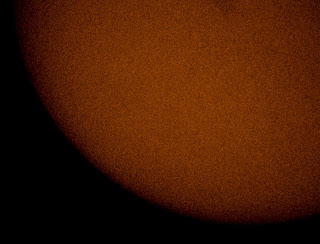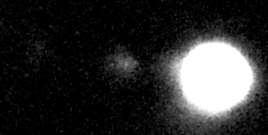June 2017
June 30th 0715 GMT
At last, some clear sky. I did a hydrogen alpha solar shoot with my PST. The disc seemed quiet but I took some full disc and close-up shots.
Unfortunately, the close-ups were ruined by filthy optics but I managed to rescue some detail from parts of the images.
June 26th 1020 GMT
I took some white light full disc shots of the Sun using my Mak and DSLR. I used ISO 400, 1/4000 second exposure and 1.54 m focal length.June 25th 1215 GMT
I bin scanned the Sun through moving cloud. I could just make out a single sunspot that I had been following n the Big Bear and SOHO images.
June 21st 1235 GMT
I tried a solar hydrogen alpha shoot with two different eyepieces for afocal projection. The first set of shots was with a 20mm Moonfish Group eyepiece.
I then tried the zoom eyepiece. It seemed to work better but I had problems with seeing the image on the camera for the close-ups.
June 20th 2100 GMT
I did a shoot of Jupiter with its moons but caught only one.June 20th 1300 GMT
The solar prominence from the day before had gone but there seemed to be lots of shading on the solar surface.
I tried an experimental shot of the Sun in white light with my camera alone: ISO 100, 1/4000 second exposure and 300mm focal length, with a Baader filter. Unfortunately, the focus was out and I did not capture any sunspots.
June 19th 1530 GMT
I saw a nice filament in hydrogen alpha light and took the usual sequence of shots.
June 18th 1020 GMT
There was some thin cloud around but, buoyed with the successful shoot of the day before, I repeated my solar shoot in normal light.
June 18th 0015 GMT
June 18th 0015 GMT
It was about as dark as it gets this time of year. I bagged the Andromeda Galaxy (M31) and it showed structure. Melotte 20 showed more stars than before. I also found M22 in Sagittarius and revisited some objects that I had seen earlier.
It seemed strange that I had so few opportunities to view the night sky, due to weather and health issues. It was great to be out in shorts and T-shirts.
June 17th 2215 GMT
I was amazed at how much twilight there was. I started off by shooting Jupiter and Saturn at ISO 6400, 300mm focal length and 2 seconds exposure. I was hoping to capture a moon or five. A bin scan of Jupiter showed two moons to the left (east). I was not sure whether "Titan" was Saturn's brightest moon or a background star.
First up was Jupiter.
Nothing from Saturn.
First up was Jupiter.
Nothing from Saturn.
Even though Albireo was barely visible in the twilight, I had a go at shooting it just in case. I also added a few dark frames.
I didn't get anything approaching what I'd done previously, even though I could make a couple of stars out.
I didn't get anything approaching what I'd done previously, even though I could make a couple of stars out.
I switched to 18mm, ISO 400 and a bulb (indefinite) exposure and aimed at Bootes. I was hoping that the worst case would be some nice star trails and the best case would be some meteors. I carried on with my binoculars.
As it turned out, the line that looked like a meteor was caused by an aeroplane. There is also another aeroplane trail on the image.
As it turned out, the line that looked like a meteor was caused by an aeroplane. There is also another aeroplane trail on the image.
Melotte 20 was very low down but I could still see the brightest stars. I tried to find the Andromeda Galaxy (M31) but it was a tough object, low down in the twilight. Albireo split easily enough. I found M13 in Hercules but the sky was too bright for M92. Low down, I could see the Lagoon Nebula (M8). Melotte 111 showed well but I could not find M3. My final object on the scan was the Wild Duck Cluster (M11).
June 17th 1000 GMT
June 17th 0940 GMT
I took a few full disc shots of the Sun with my Mak and DSLR. ISO 400 1/4000 second exposure and 1.54 m focal length.
June 16th 2215 GMT
I had another go at Jupiter with my Bresser Electronic Eyepiece. OK, same result as before!
I took a series of shots of Jupiter with my Mak and DSLR:
1/3 second ISO 6400 and 1.540 m focal length:
1/200 second ISO 6400 and 1.540 m focal length:
No, nothing useful. Just a featureless blob.
1/100 second ISO 6400 and 4.620 m focal length:
Same again!
1/20 second ISO 6400 and 9.240 m focal length:
Er, nope!
I also tried Alcor/Mizar with 1/3 second ISO 6400 and 1.540 m focal length:
Deep Sky Stacker did not work at all but it was nice to see Mizar almost split into two.
Deep Sky Stacker did not work at all but it was nice to see Mizar almost split into two.
June 16th 1430 GMT
I bin scanned the Sun but was not totally sure I'd seen a sunspot or not. I then used my Coronado PST to do a hydrogen alpha shoot. I saw a sunspot and some surface shading near the limb.
June 15th 2100 GMT
I did a quick photo shoot of Jupiter with its moons with my DSLR.June 15th 1630 GMT
I caught the Sun in some clear sky with my Coronado PST. Visually, I could make out an active region rotating onto the solar disc and a small filament.
June 15th 1330 GMT
I bin scanned the Sun through moving cloud and saw a sunspot.
June 13th 2130 GMT
It was still very much twilight but also near bedtime. I took a few frames and darks of Jupiter using my normal method with my DSLR alone.
June 13th Morning
I fiddled with my Bresser Electronic Eyepiece and found it was working. I imaged a leaf on a distant tree.June 12th 2230 GMT
I had a session with my Mak and Bresser Electronic Eyepiece. It did not work and I was going mad! At least I had a nice view of Jupiter in the eyepiece.
OK, I got my DSLR out instead. I started off snapping Jupiter at 0.5 second exposure at ISO 6400. A quick look showed that I'd caught at least one moon on "film". I tried exposures of 1/100 second and longer ones, as I added a 3x Barlow lens and finally a 1/20 second exposure with a 2x Barlow added to give a focal length of 9.2 metres. Early indications showed that I had caught some of the cloud bands but the contrast was not good.
First was the shot with the moons.
It took a lot of work to enhance the jovian cloud bands from the close-ups.
I combined the two to get the final result.
June 10th 1740 GMT
During a rare clear spell in an otherwise cloudy day, I checked the Sun in hydrogen alpha light. It was very quiet.
June 9th 1350 GMT
The sky cleared, so I re-did the solar photo shoot.
June 9th 1120 GMT
I checked the Sun in hydrogen alpha light with my PST. It looked quiet and I took some full disc shots before cloud moved in. Unfortunately, the images were too blurred.
June 8th 2150 GMT
There was a full moon, lots of twilight and a considerable amount of cloud, hardly ideal viewing conditions. I went out with my Mak and DSLR at ISO 6400 and 300mm focal length.
I took some lunar shots at 1/4000 second exposure.
I took some snaps of Jupiter, hoping to catch some moons at 2.5 seconds exposure.
Finally, I took some shots of some clearer sky between Deneb and Vega in the vain hope of catching some stars.
June 7th 0700 GMT
I bin scanned the Sun in a clear sky but did not see any sunspots.June 4th 2150 GMT
It was still very much twilight when I went out. There was some thin cloud around but it was clear around Jupiter and the Moon. I tried the same idea as the night before with my DSLR.
I took some lunar frames at 300mm focal length, ISO 400 and 1/2000 second exposure.
I took some Jupiter frames at 300mm focal length ISO 6400 and 2.5 seconds exposure.
I took some frames of Jupiter and the Moon at 70mm focal length and 1/5 second exposure. I overlaid the above images of the Moon and a close-up of Jupiter with moons onto the original to get this:
June 4th 1805 GMT
I bin scanned the Sun through some thin cloud and glimpsed a sunspot.June 3rd 2220 GMT
There was some cloud around but I managed to see the Moon close to Jupiter. I took 3 sets of shots with my DSLR at 300mm and ISO 400. I took 11 Moon frames at 1/1000 second exposure. Some with both objects with 1 second exposure and finally the planet at 2.5 seconds, hoping (in vain) to catch the Moon. This was the composite view.June 3rd 0755 GMT
I did a solar hydrogen alpha shoot of the Sun. The solar disc seemed rather bland and I could not see any of the sunspots that had appeared on the professional images.
June 1st 2145 GMT
I took three separate imaging runs of Jupiter and combined them to make the final image.
Jun 1st 1740 GMT
I caught the Sun in my PST in hydrogen alpha light. The solar disc was very bland. I caught part of the disc but the shot was ruined by cloud.





